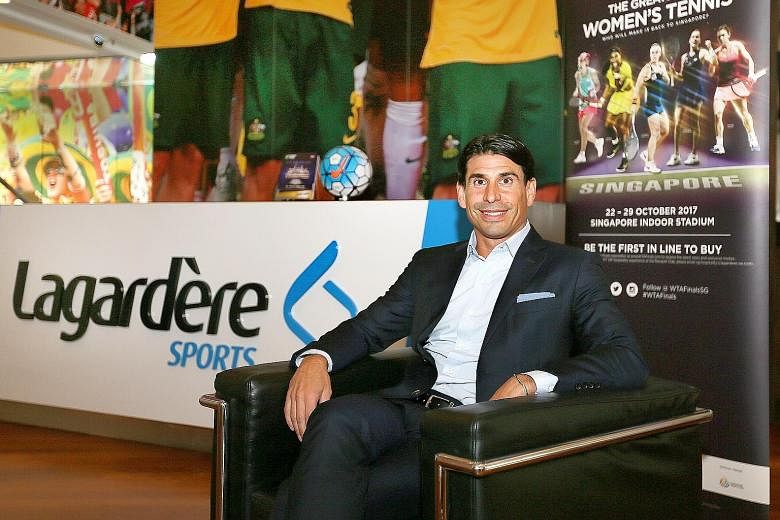The Internet has made the world smaller and linked people together more effectively than in the past, but it has also made it harder for advertisers to connect with the millennial audience.
Reaching out to them is key, noted Lagardere Sports' executive vice-president of global partnerships Adrian Staiti.
This demographic, broadly defined as those born between 1980 and 2000, has entered its prime spending years. A 2013 Accenture report noted that, by 2020, millennials in the United States would spend US$1.4 trillion (S$1.89 trillion) annually, or 30 per cent of the country's total retail sales.
Staiti, whose global sports marketing agency is the promoter of major sports events in Singapore like tennis' WTA Finals and golf's Singapore Open, told The Straits Times: "They don't pay attention to advertising, they have ad blockers on their phones, (and ads are) annoying and a nuisance for them."
This is no baby boomer paranoia. A 2014 study by US-based marketing and strategy firm The McCarthy Group noted that 84 per cent of millennials "do not like or trust all forms of advertising".
Staiti notes that the days when brands like "Budweiser or Coca-Cola would spend massive amounts of money and all that they wanted was to put their beautiful logos out there and have people see them" are long gone.
The solution is that brands have to be more creative in their engagement strategies, added the 42-year-old American, and platforms like live sports offer an attractive medium.
-
84
Per cent of millennials who do not like or trust all forms of advertising, noted a 2014 study.
1.89
Trillion Singapore dollars millennials in the US are expected to spend by 2020, or 30 per cent of the country's total retail sales.
He explained: "Sport has a rich bank of content that they can draw on. What sports can do is to create an opportunity for brands to communicate with people in the way they want to be communicated to, and with content they actually want to consume."
Global sports sponsorship is projected to reach US$62 billion this year, Nielsen reported.
Staiti said: "In Asia, we're still trying to convince more brands to put more money into the sports and entertainment bucket."
While the continent continues to lag behind, there are positive signs, fuelled by the recent surge in spending from China.
Magna Global, the media buying agency, estimated that the Asia-Pacific's advertising market will grow by 5.6 per cent from the previous year to US$156 billion. China is the region's largest market, with 415 billion yuan (S$85 billion) of ad sales expected this year.
Staiti noted that Singapore's size and population does count against it when compared to China or markets like Thailand and Vietnam, but stressed it was not a major obstacle.
Local companies have shown a willingness to make that leap.
Singapore Airlines, and previously Singtel, were title sponsors of the Singapore Grand Prix, while property developer OUE has backed the badminton Singapore Open. Foreign banks like SMBC and HSBC have also established premier golf tournaments at Sentosa Golf Club.
Staiti said: "There is room for smaller companies to get involved, maybe not at a big title level."
The number of high-profile sporting events in Singapore has also grown over the past decade. New additions to the local sports calendar in recent years include football's International Champions Cup and the Ultimate Fighting Championship, presenting more branding opportunities for companies.
Staiti said: "The more brands that actually see sport as a viable place to spend their money, the more sports will boom. A lot of companies are still learning. The key is to give it a chance and realise the power of what good marketing sports can do for them.
"We are always looking to find what additional events we can bring here and to the region."
Lagardere Sports was involved in the SC Global Tennis For Every Child programme, started in 2014 when the WTA Finals moved to Singapore. Close to 50,000 primary school pupils have gone through the scheme and this was a good example of leveraging on "assets within an event", said Staiti.
He said: "The evolving landscape of sport marketing challenges us more and makes us work harder."
•The Business of Sport is a monthly series that explores the current trends and talking points of the emerging sport industry.

